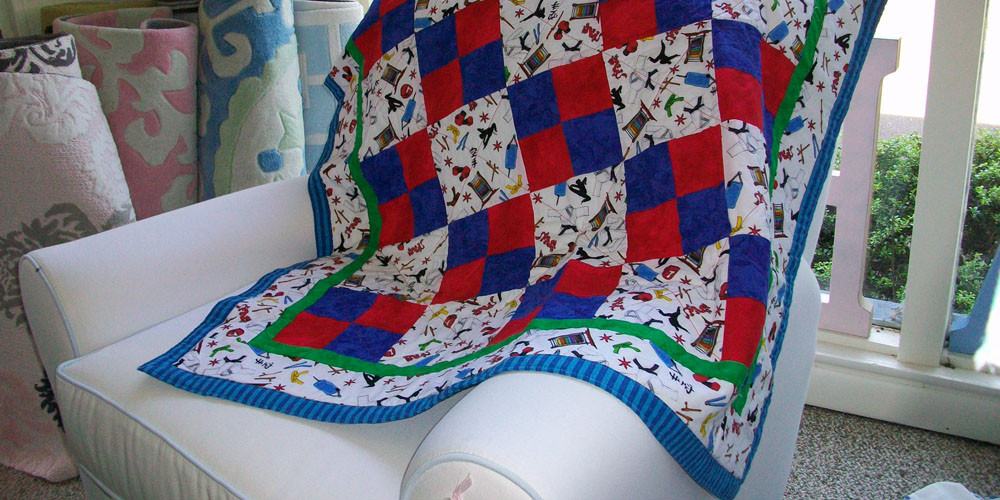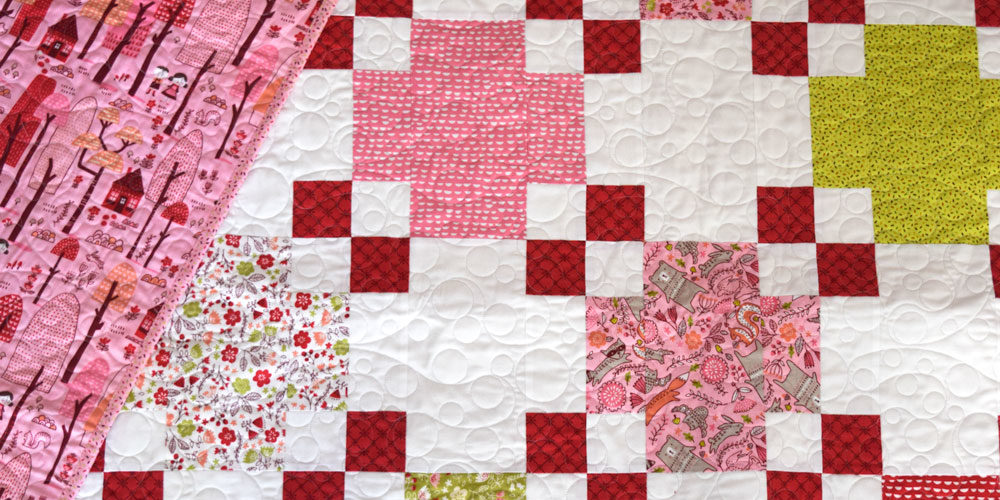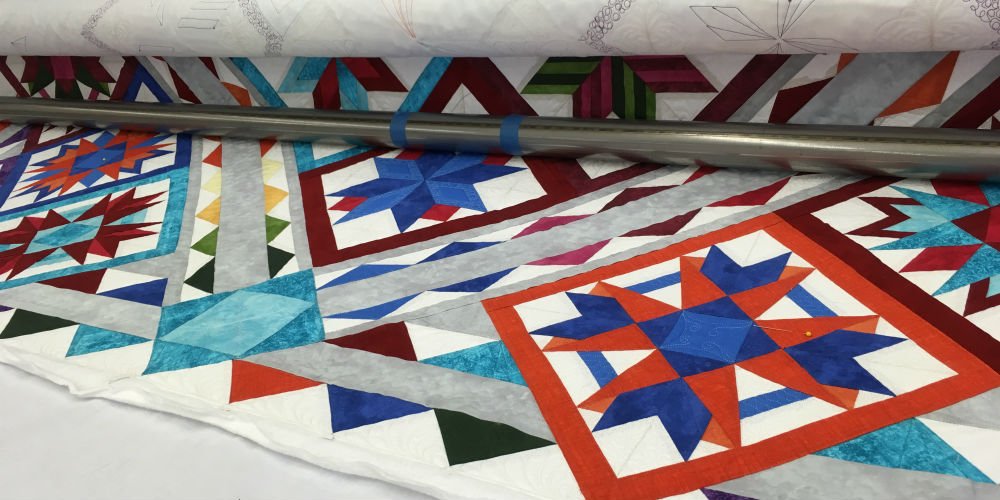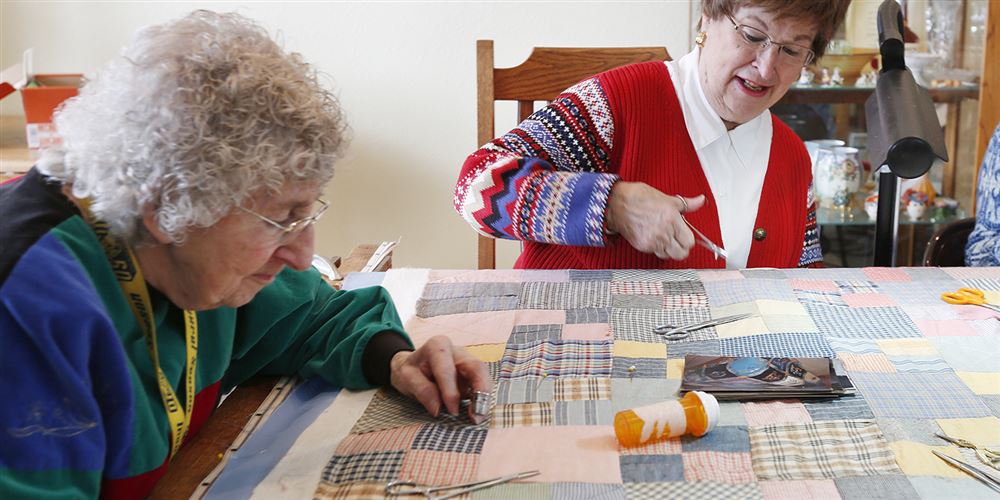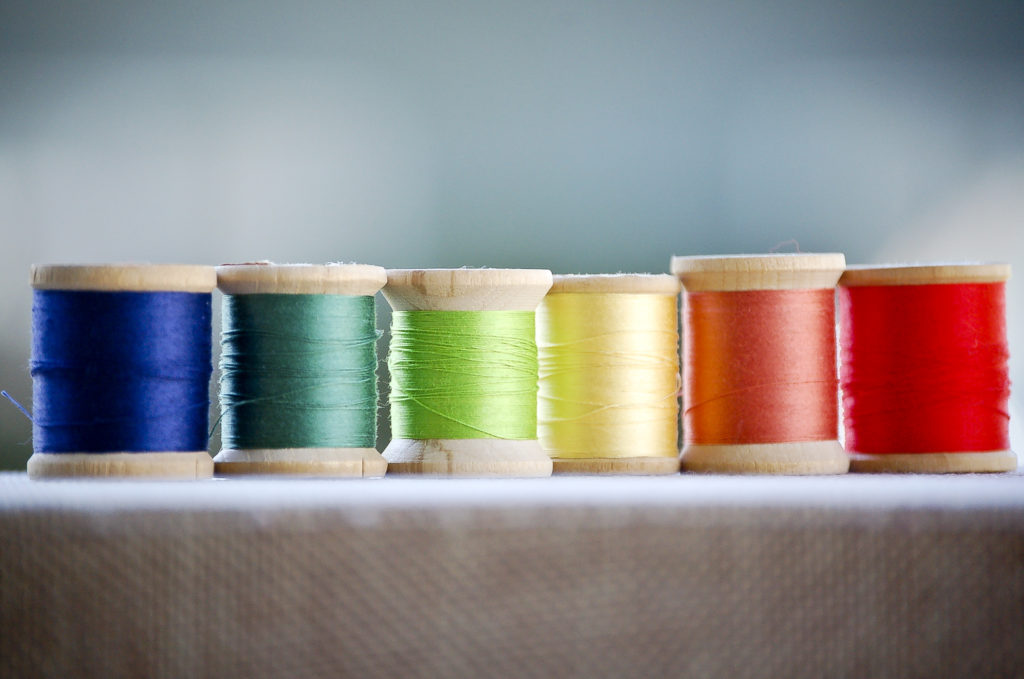
Take two talented people, one in retirement, a late life marriage and a large house . Mix well, add enthusiasm, and what do you get? Quilts. I got hooked on quilts when I acquired an unfinished quilt in the log cabin pattern made by my great grandmother. “I was intrigued,” and learned to add the batting and the backing. “Then I went into scrap quilts and took lessons.” Soon I was skilled enough to begin teaching others.
I led classes in in several states, all the time continuing to hone my skills by taking lessons as well. My husband got interested in quilting soon after. His specialty soon became operating the quilting machine. Now we own two of the 14 foot devices, each in its own room. “If you want to do something creative, you can make a quilt top and have someone else do the quilting.” That’s where the machine comes in. Quilts are made up of three layers: the decorative top fashioned from small pieces of fabrics in a geometric or free form design, the middle layer of cotton or synthetic batting to provide warmth and the backing, usually a plain fabric in a color that complements the top or in white. In making quilts entirely by hand, crafts people often tie the layers together with hundreds of bits of string or yarn.
They may, instead, sew them together by hand, often making the stitches into decorative patterns. The quilting machine duplicates that tedious handwork, sewing the layers with decorative stitching in any design desired, smoothly and evenly with no bunching or lumping of the inner batting. Learning to run the new, improved second machine has become my husband’s latest fun thing to do. The demand for his work is strong and growing. Quilting is big,
particularly with the proliferation of quilt stores. “People find out quilting is really relaxing.” “And people are becoming more productive”. “They can see an end to their project” when the final, difficult step is taken over by the machine.”
It may surprise some to learn that quilting is growing in popularity with men, who sometimes comprise half the classes. “We recently went to a quilting conference. “There were five thousand quilters there. Quilting is huge.” I like to work with beginners. Many want to follow a standard design, down to fabrics and colors. “As you progress, you tend to choose your own colors.” Quilting is not just for making bedcovers. Our living room has quilted wall hangings and table runners. A quilted back pack lies on a coffee table; all the materials to make it are available as a kit. “Every quilter has his or her UFO’s”. “That stands for UnFinished Objects.” I have a few of my own stashed in closets and drawers. Our next venture is to offer “Quilting Camps.” It will be a chance for a small group of women to get together” and spend all weekend in our pajamas just quilting.” It’s a girl thing.
Take two talented people, one in retirement, a late life marriage and a large house . Mix well, add enthusiasm, and what do you get? Quilts. I got hooked on quilts when I acquired an unfinished quilt in the log cabin pattern made by my great grandmother. “I was intrigued,” and learned to add the batting and the backing. “Then I went into scrap quilts and took lessons.” Soon I was skilled enough to begin teaching others.
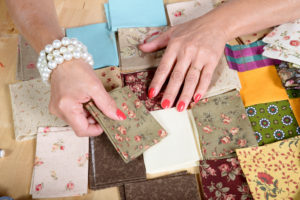
I led classes in several states, all the time continuing to hone my skills by taking lessons as well. My husband got interested in quilting soon after. His specialty soon became operating the quilting machine. Now we own two of the 14 foot devices, each in its own room. “If you want to do something creative, you can make a quilt top and have someone else do the quilting.” That’s where the machine comes in. Quilts are made up of three layers: the decorative top fashioned from small pieces of fabrics in a geometric or free form design, the middle layer of cotton or synthetic batting to provide warmth and the backing, usually a plain fabric in a color that complements the top or in white. In making quilts entirely by hand, crafts people often tie the layers together with hundreds of bits of string or yarn. They may, instead, sew them
together by hand, often making the stitches into decorative patterns. The quilting machine duplicates that tedious handwork, sewing the layers with decorative stitching in any design desired, smoothly and evenly with no bunching or lumping of the inner batting. Learning to run the new, improved second machine has become my husband’s latest fun thing to do. The demand for his work is strong and growing. Quilting is big,
particularly with the proliferation of quilt stores. “People find out quilting is really relaxing.” “And people are becoming more productive”. “They can see an end to their project” when the final, difficult step is taken over by the machine.”
It may surprise some to learn that quilting is growing in popularity with men, who sometimes comprise half the classes. “We recently went to a quilting conference. “There were five thousand quilters there. Quilting is huge.” I like to work with beginners. Many want to follow a standard design, down to fabrics and colors. “As you progress, you tend to choose your own colors.” Quilting is not just for making bedcovers. Our living room has quilted wall hangings and table runners. A quilted back pack lies on a coffee table; all the materials to make it are available as a kit. “Every quilter has his or her UFO’s”. “That stands for UnFinished Objects.” I have a few of my own stashed in closets and drawers. Our next venture is to offer “Quilting Camps.” It will be a chance for a small group of women to get together” and spend all weekend in our pajamas just quilting.” It’s a girl thing.If you want some information about quilting with a Singer featherweight click here

